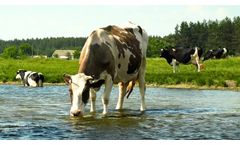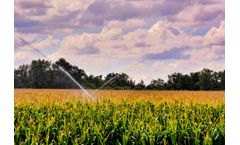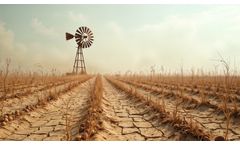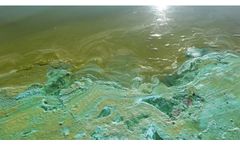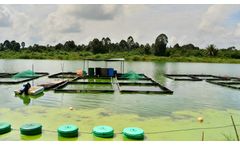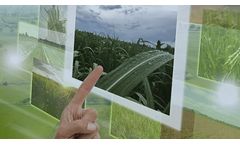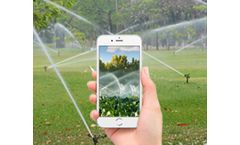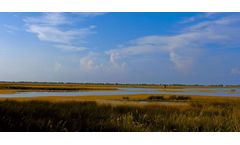Refine by
Water Resource Articles & Analysis
171 articles found
Water is present in everything we eat. It often goes unseen, yet it is essential for growing, processing, transporting, and preparing every ingredient that reaches our tables. From a cup of coffee to a fresh salad or a plate of rice, water is at the heart of global gastronomy. Today, in an increasingly interconnected world, this relationship between water and food takes on new dimensions, ...
Water is the lifeline of agriculture. Its quality plays a pivotal role in crop health, yield, and overall farm productivity. However, one of the most persistent threats to agricultural water sources is algal blooms. These can severely degrade water quality. Hence, achieving algae-free waterbodies is a necessity. Harmful algal blooms (HABs) occur when algae colonies grow uncontrollably in fresh ...
The main advantages of plastics in agriculture industry are described below. Water conservation: Plastics help to establish irrigation systems such as drip irrigation and sprinkler irrigation to achieve efficient water resources management. These systems can transport water directly to plant roots and reduce the risk of ...
Field Irrigation Systems are essential in agriculture since they help provide water to plants where rain may be erratic or unavailable. Given the ever-rising population around the globe, food production is on the rise, and thus, there is a need to maximize agricultural production. Therefore, contemporary field irrigation systems have developed as an all-important tool to ...
The irrigation process in agriculture, landscaping, and water management is crucial in its work with climate change-altered efficiency and sustainability. When the global temperature increases, so does the irregular supply of water, which directly affects irrigation systems across different parts of the globe. We pick from here and discuss further how climate change impacts irrigation and the ...
Water plays a critical role in agriculture, serving as the lifeblood for crops and soil, and is essential for growing food. However, natural rainfall is often unpredictable, insufficient, or unevenly distributed across regions, making irrigation systems a vital component of modern farming. With effective irrigation, many farmers would be able to produce enough crops to meet both local and global ...
In an era where agriculture is essential for sustaining the global population, it’s crucial to examine the unseen threats that farming practices pose to aquatic ecosystems. While modern farming techniques have significantly boosted food production, they have inadvertently introduced risks that could undermine the very foundations of our aquatic environments. Farming, whether involving ...
Introduction: The Vital Role of Irrigation Water Pumps in Agriculture In the world of agriculture, water is the lifeblood that nurtures crops and sustains our food supply. As global climate patterns shift and water resources become increasingly precious, efficient irrigation has never been more crucial. At the heart of any ...
In the ever-evolving landscape of the food industry, challenges come in many forms. One of the most insidious threats to food production and quality is the proliferation of algae. Often overlooked or underestimated, algae can quietly exert harmful and damaging effects over time. This gradual contamination of water sources can lead to a cascade of issues throughout the food supply chain, ...
This greatly improves the efficiency of agricultural production and reduces labor costs. 2. Optimizing agricultural resource utilizationModern agriculture focuses on the rational use and conservation of resources. Smart switches, by precisely controlling the operating time and power of devices, effectively avoid waste of resources. For example, ...
The irrigation sector has a key role to play in ensuring food security in the current global context, marked by a changing geopolitical situation, climate change and the scarcity of water resources. Thus, agricultural irrigation is facing new challenges that mean irrigation associations will need to digitalize their processes. ...
ByIdrica
Introduction: Water scarcity and the need for sustainable water management practices are becoming increasingly critical in agriculture. ...
ByJXCT
Introduction: Climate change poses significant challenges to agriculture, impacting crop yields, water availability, and pest dynamics. In the face of these challenges, climate-smart agriculture has emerged as a holistic approach to sustainably increase agricultural productivity, enhance resilience to climate change, and reduce greenhouse gas emissions. ...
ByJXCT
Applications of Soil Sensor Systems in Agriculture: Soil Moisture Monitoring: Soil moisture is a critical factor influencing plant growth and water management. Soil sensor systems provide real-time data on soil moisture levels, enabling farmers to optimize irrigation schedules and conserve water resources. ...
ByJXCT
Irrigated agriculture is an integral part of the rural economy, but increasing water use creates several challenges, not least meeting the food demands of a growing population while using as little water as possible to save energy. In this article, we’ll look at the key challenges for UK irrigation in agriculture, to shed light on what the industry must do to preserve itself. ...
This might involve leaching salts with additional water, adjusting irrigation practices, or choosing salt-tolerant crops. Irrigation Optimization: Knowing the salt content and water holding capacity of the soil allows for strategic irrigation. EC data informs farmers about the precise amount of water needed to reach the root zone without causing ...
As water resources become increasingly scarce, it is crucial to find ways to use water more efficiently in agriculture. ...
ByJXCT
30 years of data show salinity of groundwater increasing even far from coasts After 30 years of monitoring wells, the latest U.S. Geological Survey (USGS) research shows groundwater across the nation is becoming saltier. It has long been known that seawater can intrude when coastal aquifers become depleted and sea levels rise, but the most recent research throws light on saline intrusion far ...
Enhanced Crop Yields: Optimizing nutrient levels leads to healthier, more resilient crops, resulting in increased yields and improved economic returns. Resource Conservation: Targeted fertilization strategies reduce the amount of fertilizer required, conserving resources and lowering production costs. ...
This granular information empowers farmers to make informed decisions regarding irrigation, fertilization, and crop management, optimizing resource utilization and maximizing yields. Harnessing Soil Sensor Data for Efficient Irrigation Over-irrigation remains a major challenge in agriculture, leading to water waste, soil erosion, and environmental degradation. ...


